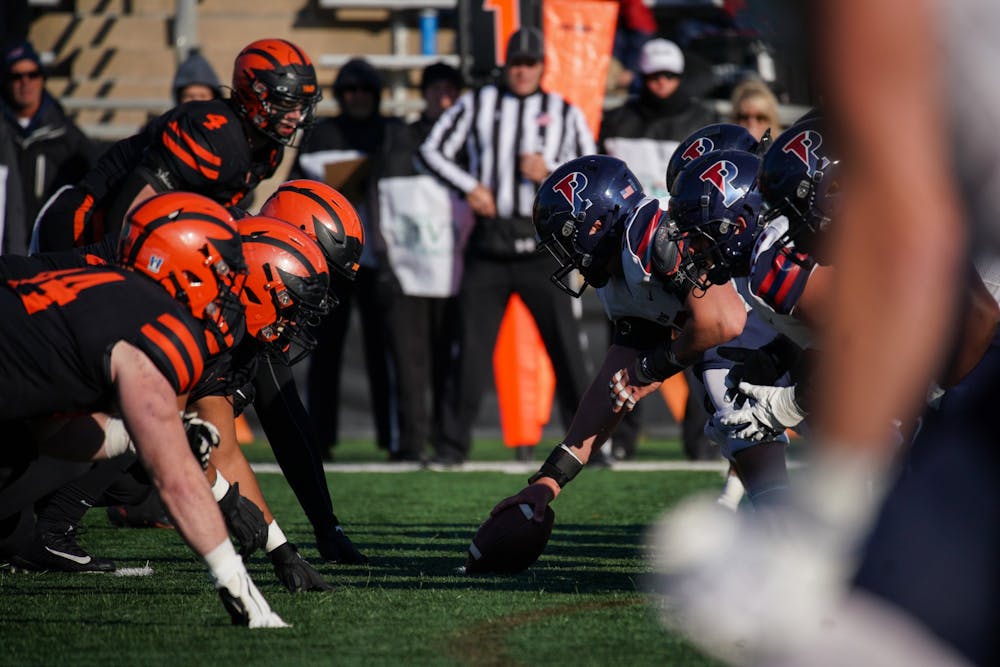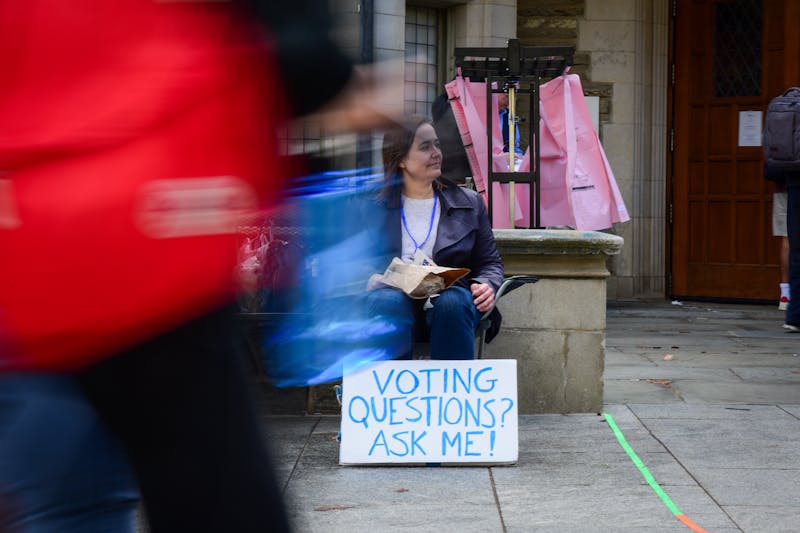
Penn offense lines up against Princeton during their last game of the season on Nov. 19.
Credit: Anna VazhaeparambilWe all saw what happened in March: a semifinal loss in the Ivy League Tournament for Penn and a Sweet Sixteen run for Princeton. While some cheered the Tigers’ historic victories, watching them make history did not sit right with me.
Frankly, I hated watching every second of it. And if you root for Penn, you should have too.
Because, despite the narrative that the rivalry is dead, Penn and Princeton’s rivalry — and all of Penn’s rivalries — cannot and should not die. And we need you.
Rivalries are the lifeblood of collegiate sports. Turn on ESPN for college football or basketball or really any college sport and an anchor will bring up a rivalry. The Duke and UNC rivalry. The Army and Navy rivalry. The Michigan and Ohio State rivalry. They’re everywhere in the college landscape.
Rivalries play an undeniable role in collegiate athletics — I’d argue more than in the professional sports world. Incoming recruiting classes choose to inherit centuries’ old rivalries year after year. They build off the success and losses of players before them.
While the Penn and Princeton rivalry is not on the same level as the one between Duke and UNC, that doesn’t mean we shouldn’t care. We should. We should care a lot more than we do right now.
On other college campuses, rivalries are lauded. The whole campus essentially shuts down on the day of the big game in favor of student celebrations. The anticipation is palpable everywhere you turn. You boo and jeer at the very mention of the other school.
But that’s not the case at Penn.
Sure, people turned up for the Princeton game on Martin Luther King Jr. Day in January. But would have that many people came if Penn was not giving out food or free t-shirts? The short answer is probably no. Even when there is a packed student body at the game, it is often not an engaged one. We need a study body that screams at the top of their lungs at every free throw and cheers for every three-pointer made.
We also need a student body that boos.
Rivalries are not only built off the concept of competition. They are also built off the dichotomy of love and hate: love for your team and hatred for the opposition. You need both factors to keep a rivalry going, and that hate is just as important as love. In my opinion, you cannot start rooting for your team’s rivalry just because your team is out of the competition. That defeats the point of a rivalry. A rivalry is supposed to be 24/7 — you don’t get days off just because they aren’t playing each other.
These rivalries thrive off intensity, intense love and intense hate. The hatred manifests itself into boos and jeers and mocking taunts in the arenas or stadiums that create a hostile environment for the away team. These hostile environments are everything for college sports — the packed arena, the deafening volume. College sports are built off a passion and love for the game and players deserve these types of environments to thrive in.
Outside the stadium, you cannot give leeway. You cannot say, “I’ll root for Princeton because they’re the closest to Penn in March Madness.”
Quite the opposite. You can’t root for the rival. This is a rivalry. A rivalry does not waver in the face of a losing streak. Sure, it can feel one-sided, but it should never be forgotten. I said that a rivalry thrives off intense love and intense hate. That intense love should implore you to always have hope — hope for a change of the tides and a victory in your name.
At the end of the day, it’s the love for your team that implores you to show up and be present in the game — and to hate your enemy’s success.
It’s time to take pride in Penn’s rivalries. Time to start booing at the top of your lungs. And sure, you can wear your free t-shirt for showing up while you’re at it.
KRISTEL RAMBAUD is a sophomore sports reporter studying nursing from Monroe, N.J. All comments should be directed to dpsports@thedp.com.
The Daily Pennsylvanian is an independent, student-run newspaper. Please consider making a donation to support the coverage that shapes the University. Your generosity ensures a future of strong journalism at Penn.
Donate






